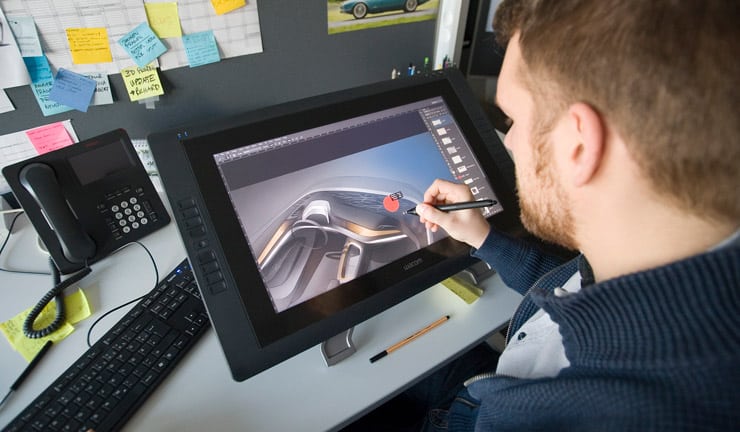
Designing electronic product enclosures that meet the needs of the application and ensure smooth operation is critical for the success of your device. Whether it is a smart wristband, a healthcare gadget, wireless industrial monitoring equipment, or a part of an energy distribution system—they all should be appealing, user-friendly, and meet consumer demand.
In this article, we will highlight five tips for IoT startups looking to craft an electronic product enclosure with minimum financial risk and greater chances of market success.
Getting the Enclosure You Need
Before proceeding to the electronic enclosure design itself, remember that not only aesthetic qualities matter. The design process comes with a gamut of minute details to consider, including:
- Gathering customer wishes and needs
- Identifying product purpose and requirements
- Analyzing the size and shape of all hardware components
- Mounting the components to prevent shorting and jumbling
- Considering the accessibility of enclosure parts if some of them will need to be replaced
- Routing cables, wires, and subassemblies
-
Define Product Requirements
Think about what is needed to meet your customers’ wishes and needs first. Craft a product requirements document (PRD) that includes the product’s purpose, as well as its features, functionality, behavior, and business objectives. This will serve as a guide for business and engineering teams to help design, launch, and further market the product.
With the document at hand, you can keep your development process in scope, evaluate and spot future obstacles or complexities, convey the priority of the product’s different aspects, and avoid additional expenses. Start with the most basic and simple features of your enclosure. If you keep your ideas streamlined initially, you are more likely to have flexibility in your design later on.
2. Use 3D Modelling
Developing an exterior for your product that allows access to the interior and stabilizes and protects its contents using 3D CAD systems is a vital step. Based on your sketches, industrial designers will create a detailed 3D enclosure model with safety, functionality, complexity, and composition of the product in mind.
During this phase, designers will consider the dimensions of the device: they lay out all components and arrange them until the configuration makes sense. The size and weight should meet the product’s design-for-manufacturing needs, with optimal printed circuit board (PCB) layout and maximized space considerations. Dimensions of your product will also affect shipping rates and consumer costs.
To translate an idea into the right fit enclosure, designers usually turn to software suites to create 3D models.
TinkerCad is a free, open-source online modeling tool. The browser-based app serves for 3D design, electronics modeling, and coding. TinkerCad is easy to learn and use—simply place and configure interactive blocks one by one to create the 3D object you want.
OpenScad is a free 3D modeling solution that focuses on more than solely the artistic aspect. As a 3D compiler, the program is a great choice for elaborate projects. Thanks to Constructive Solid Geometry (CSG) and the extrusion of 2D outlines, OpenScad is excellent for simple shapes that are already parametrically defined.
3. Prototype Thoroughly
There are two most common technologies used to build enclosure prototypes. With 3D models and product drawings in your hands, you may create a prototype for your device with CNC machining (a subtractive process) or 3D printing (an additive one). Both technologies use the fused deposition modeling (FDM) process as the best option for cost, time, and result.
An additive technology, like 3D printing, creates the prototype by stacking up thin layers of plastic to create the final product. 3D printing enables you to produce complex shapes using less material. By creating several iterations of the same enclosure, 3D printing can be a reliable and sustainable manufacturing method that makes it possible to check the ergonomic properties, assembly, and placement of your device’s inner components.
A special prototyping plastic may be used during an additive process, which might differ from the production plastic used in injection molding. This could affect the final look and feel of your product, so pay attention when you receive prototypes.
CNC manufacturing, on the other hand, removes layers of material from the workpiece to produce custom shapes. It takes a block of solid production plastic and carves out the final product. The advantage of subtractive processes is that you utilize plastic that exactly matches the properties of the plastic you’ll use during the device production, so you’ll get a sample ready to be demonstrated to your management or investors. The method is cost-effective and enables high-precision and high-accuracy manufacturing.
After receiving the model, you should test and evaluate the prototype. It always takes several iterations to make functional and aesthetic changes, adjust components, and get an enclosure design that meets all the requirements. This will help you avoid costly complications when you transition from the prototype stage to full production.
4. Choose the Right Material
Material choice significantly impacts the longevity and feasibility of your product. It’s not just about visual appeal and smoothness to the touch for its ultimate end users.
When selecting the material for your sketch, keep in mind the following factors:
- Cost of the material
- Manufacturability
- Ease of modification and assembly
- Durability
- Malleability
- Availability
- Thermal resistance and throughput
- End users’ application (who will use the device and how)
Take, for example, thermal resistance and material throughput. If not thoroughly considered, both of these factors can affect the core functions of the final product. A fitness jewelry brand turned to Softeq to design a luxury bracelet that would monitor users’ physical activity. The device was supposed to talk to a mobile application over Bluetooth. At the outset, the company didn’t realize the metal case would interfere with the Bluetooth signal. To ensure a stable app-to-device connection, the Softeq team had to modify the radio chip and boost Bluetooth signal by 500%.
Metal Enclosures
A custom metal case is a good choice for products that need to be durable, reliable, and practical in use. One of the practical advantages of the material is its quality RF shielding. Premium metals are always associated with high-quality branded products, and their cost is relatively high. For more cost-effective alternatives, opt for:
- Steel
- Stainless steel
- Aluminum
Steel is a strong, durable, heavy, and readily-available metal, with an optimal cost-to-benefit ratio that’s hard to beat.
Compared to steel, stainless steel is more expensive, but it possesses non-magnetic qualities and is capable of withstanding harsh and moist environments.
Aluminum is a cheap, easily machinable, and durable enough metal. Aluminum can be anodized to provide a protective finish layer to the product, and it also allows for colorful dyeing to add a customized, professional look.
Plastic Enclosures
Plastic forms are a good compromise in terms of cost and durability. Moreover, plastic brings an opportunity to make your product as colorful as you’d like.
Acrylic is an optimal choice to work with because it can be easily laser engraved as well as heat bent to create any shape with solvent welding. To avoid static charge while working with acrylic, use anti-static acrylic material.
Acrylonitrile butadiene styrene (ABS) is a tough thermoplastic that also works for a handy enclosure. Enclosures made of ABS aren’t prone to shattering like acrylic, and it can be welded together with common acetone for permanent air-tight seals.
5. Transition to Mass Production
When you have product drawings and 3D models ready for production, send them to potential manufacturers to plan the organizational issues, estimate the cost, and discuss timeframes and deadlines.
Below is the checklist you should follow while selecting and collaborating with a contractor:
- Check the experience of selected manufacturers in similar projects; find feedback and testimonials
- Analyze offers on similar products; compare production times
- Prepare your requirements for compliance with specifications (dimensions, water resistance, etc.) and quality standards
- Write a project plan; specify your project details
- Regularly track the state of the project
- Start with manufacturing a sample enclosure to take a preliminary quality assessment, and feel free to point out any shortcomings
Case Closed
An enclosure doesn’t merely house the device components and keep them together; a user always gives attention to the outer clothing of the product. Designing an appealing, functional, and user-friendly enclosure is one of the most essential parts of product development as it adds value to enterprise solutions. We hope you’ve gained some practical insight from our electronic enclosure design guidelines and are now ready to enter the global electronics market.
About the author
Vera Solovyova is a Copywriter at Softeq–a full-stack development company and an Inc. 5000 honoree. We craft quality content to assist tech startups and large enterprises in engineering, transforming and scaling smart technology systems.


